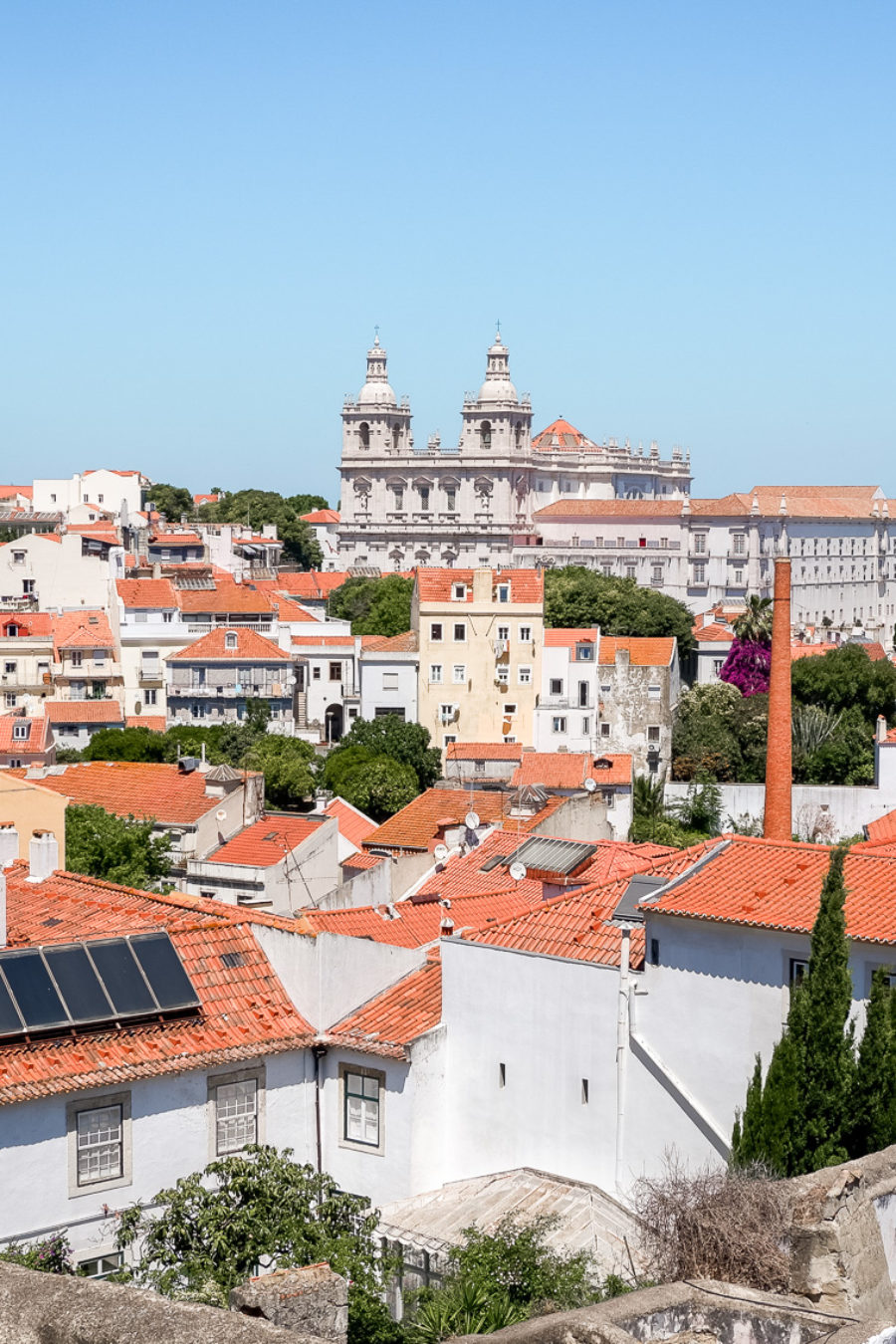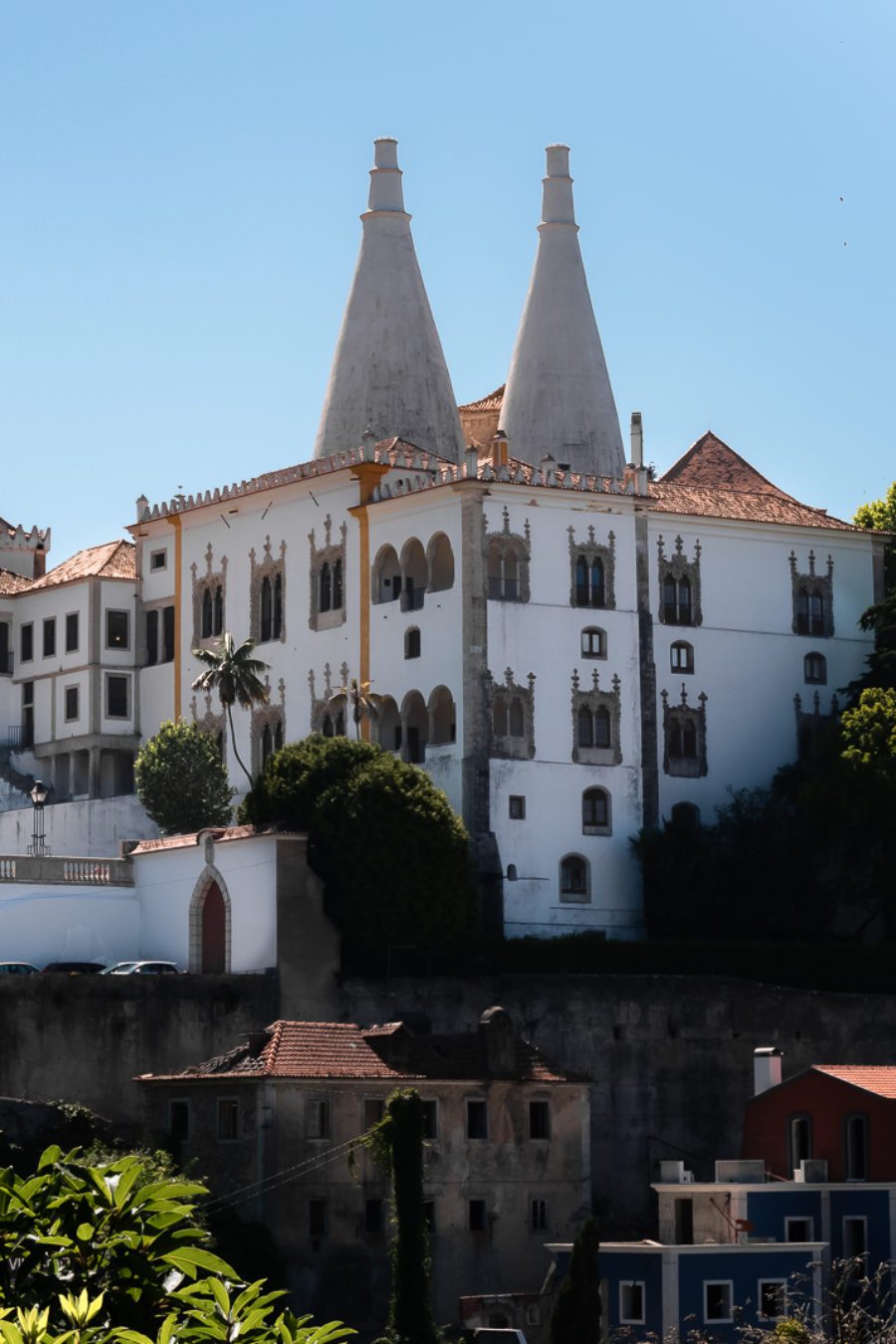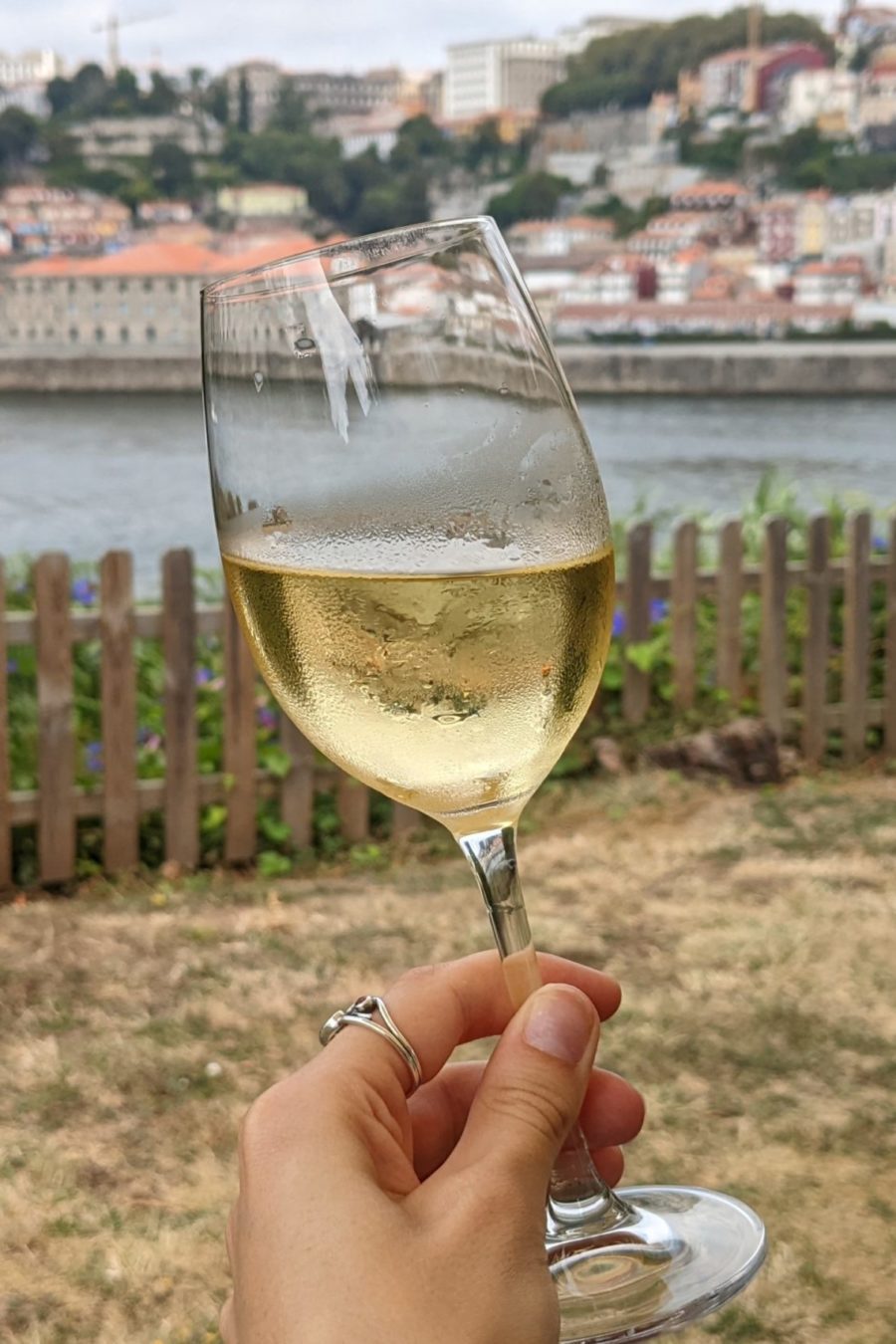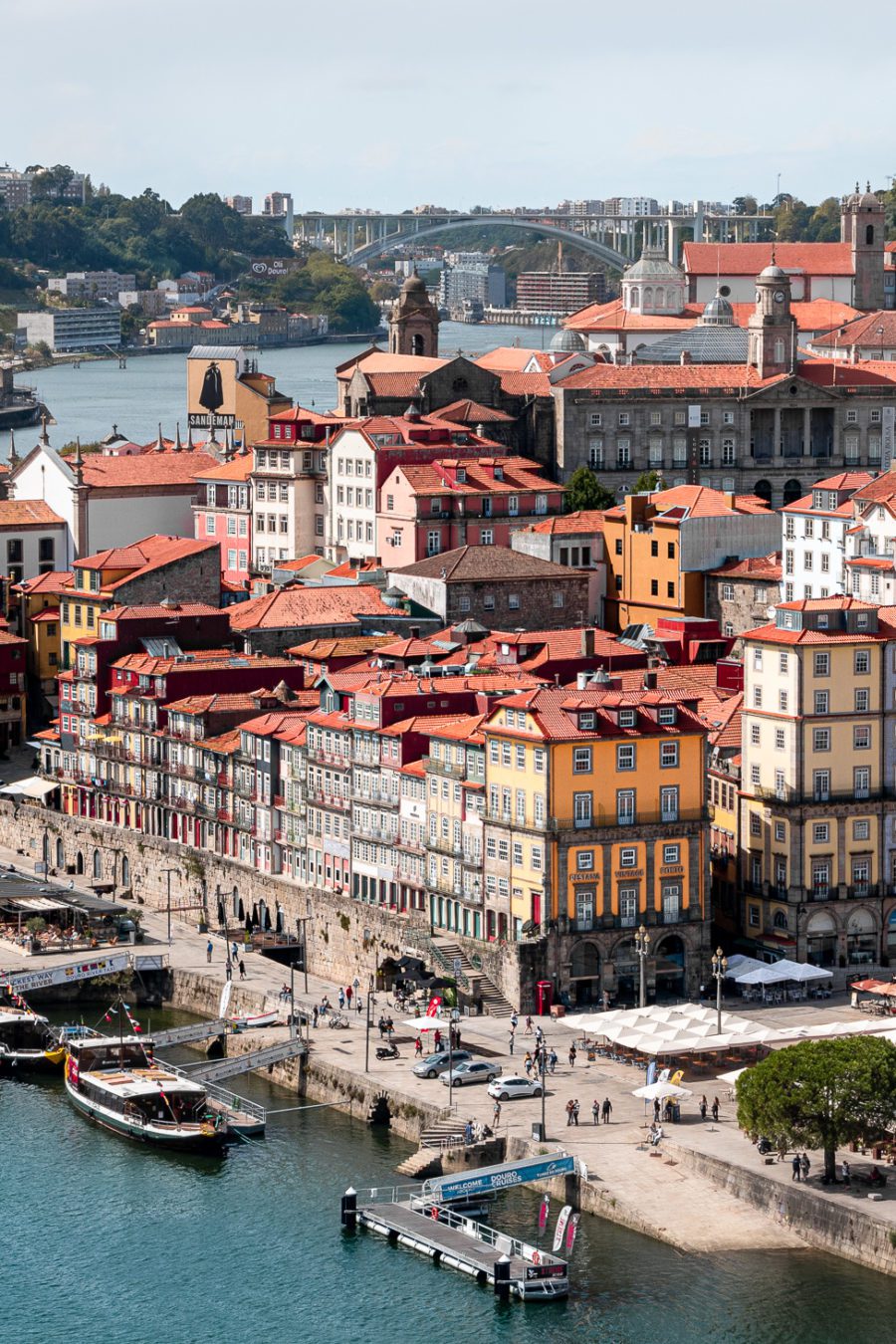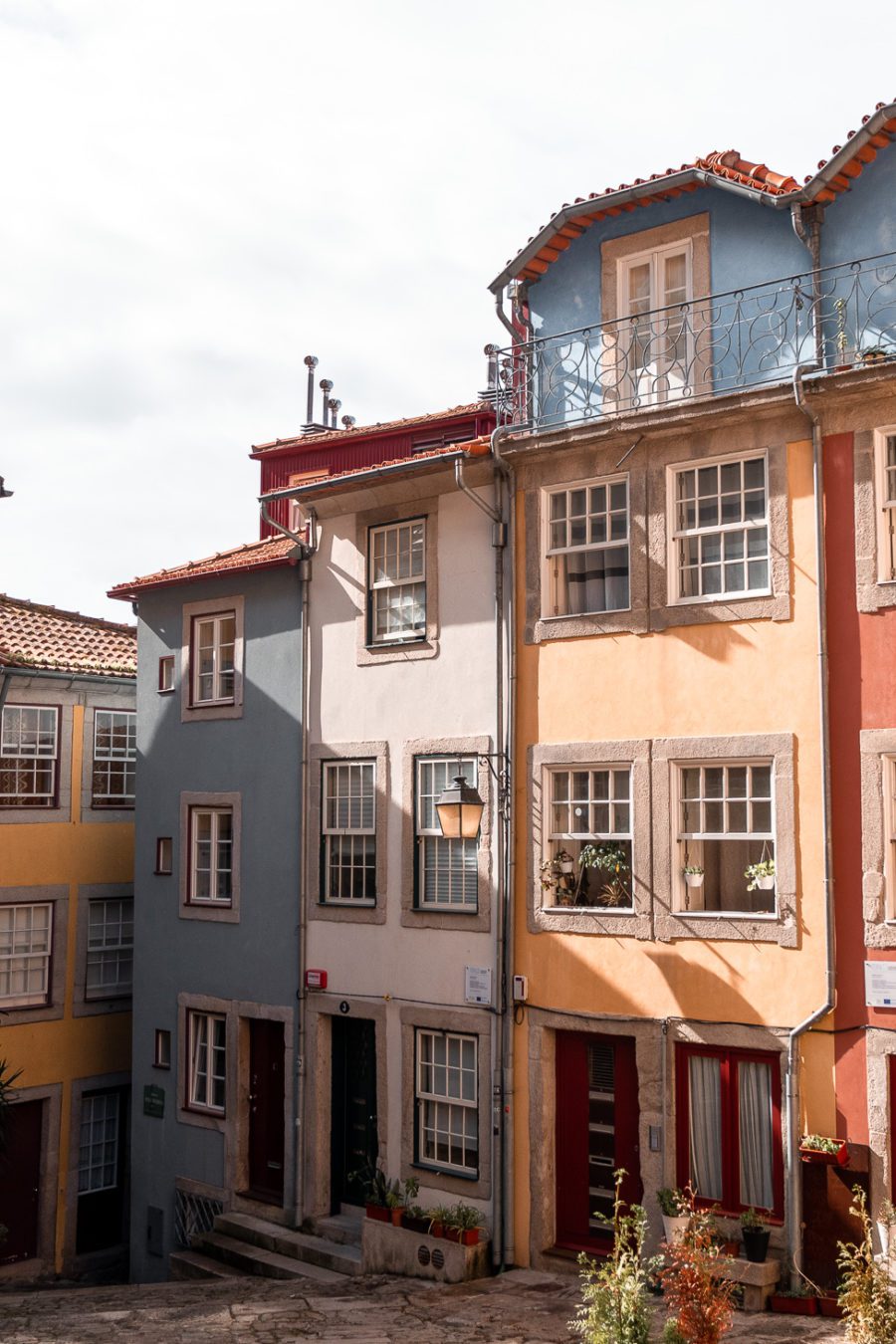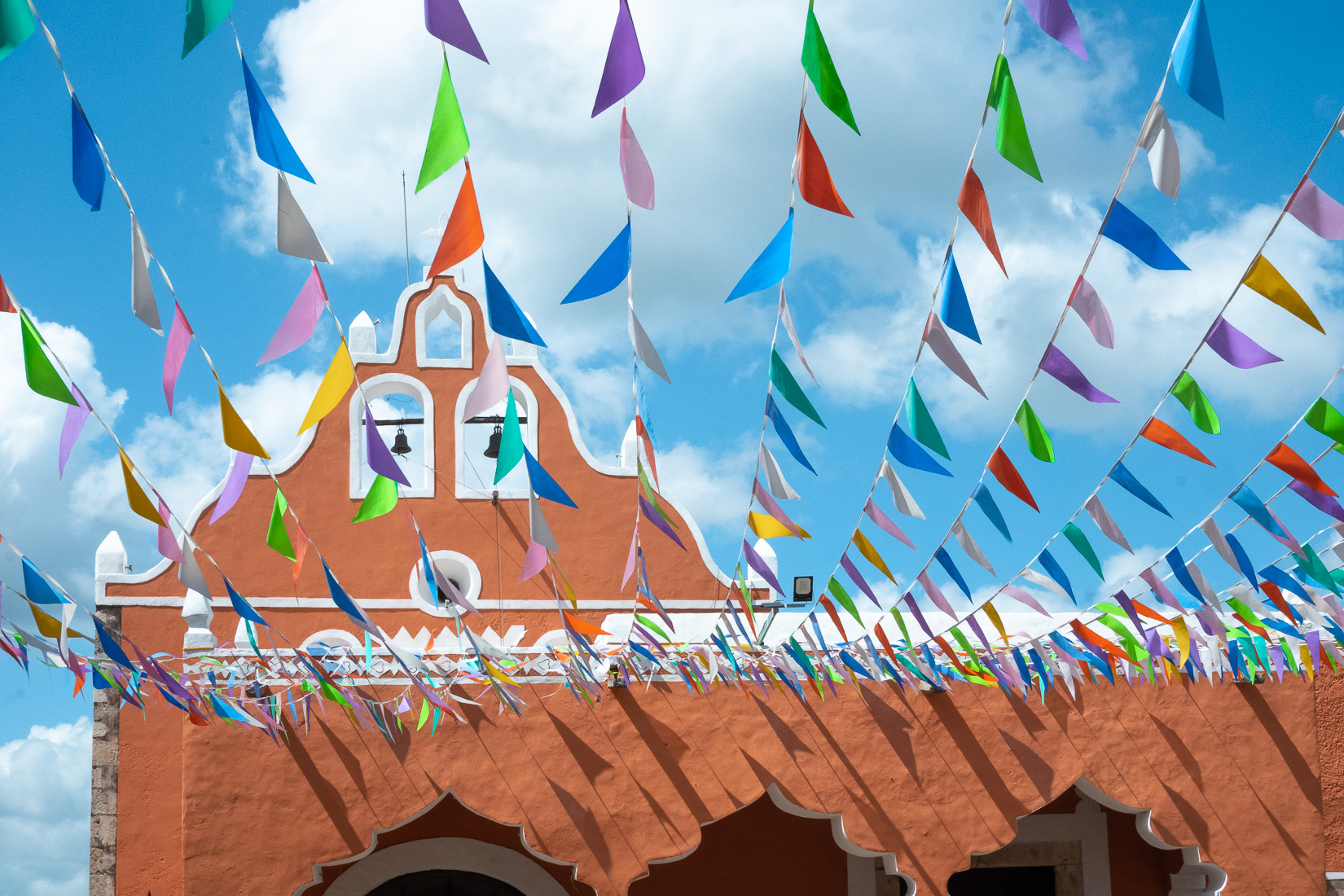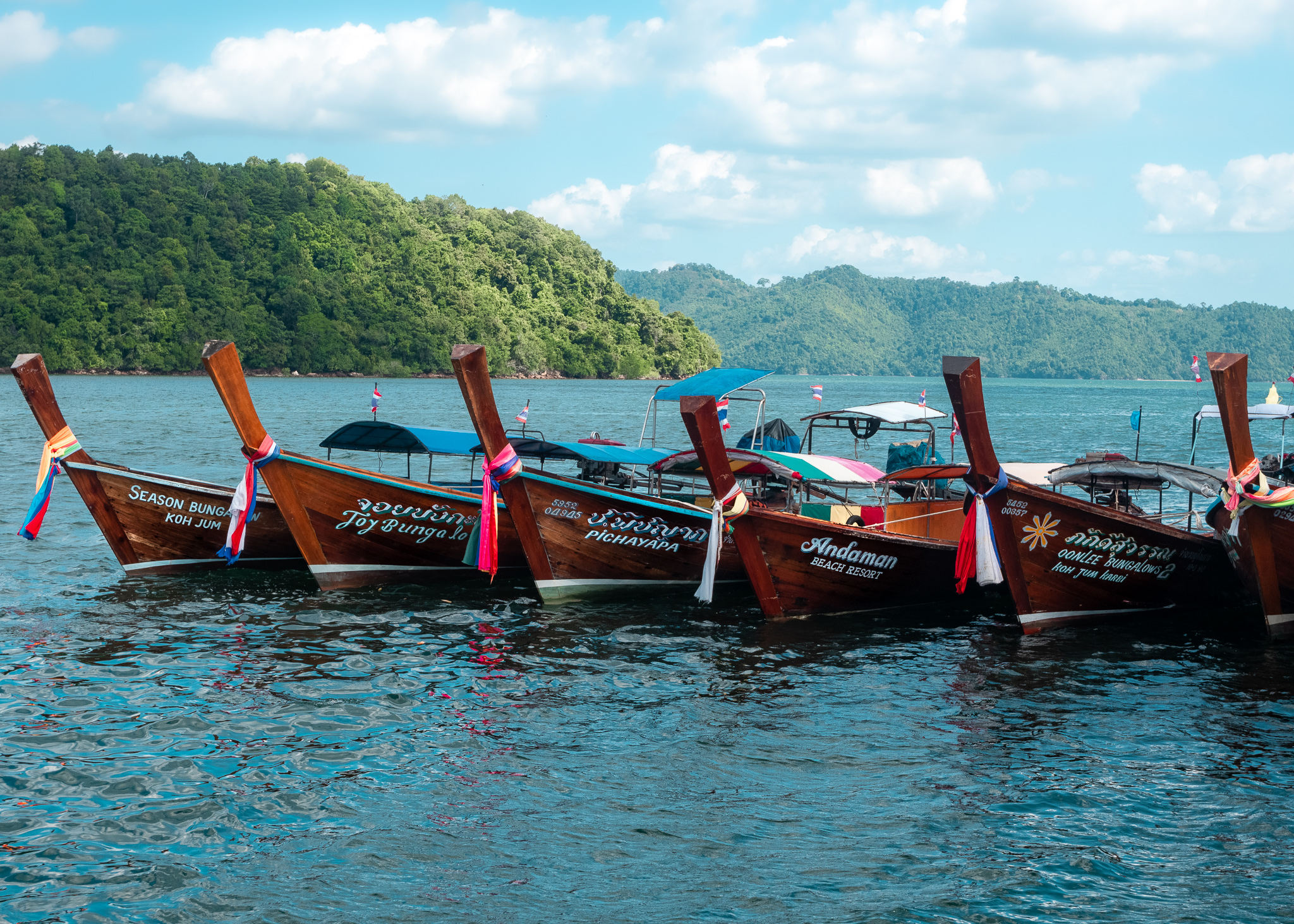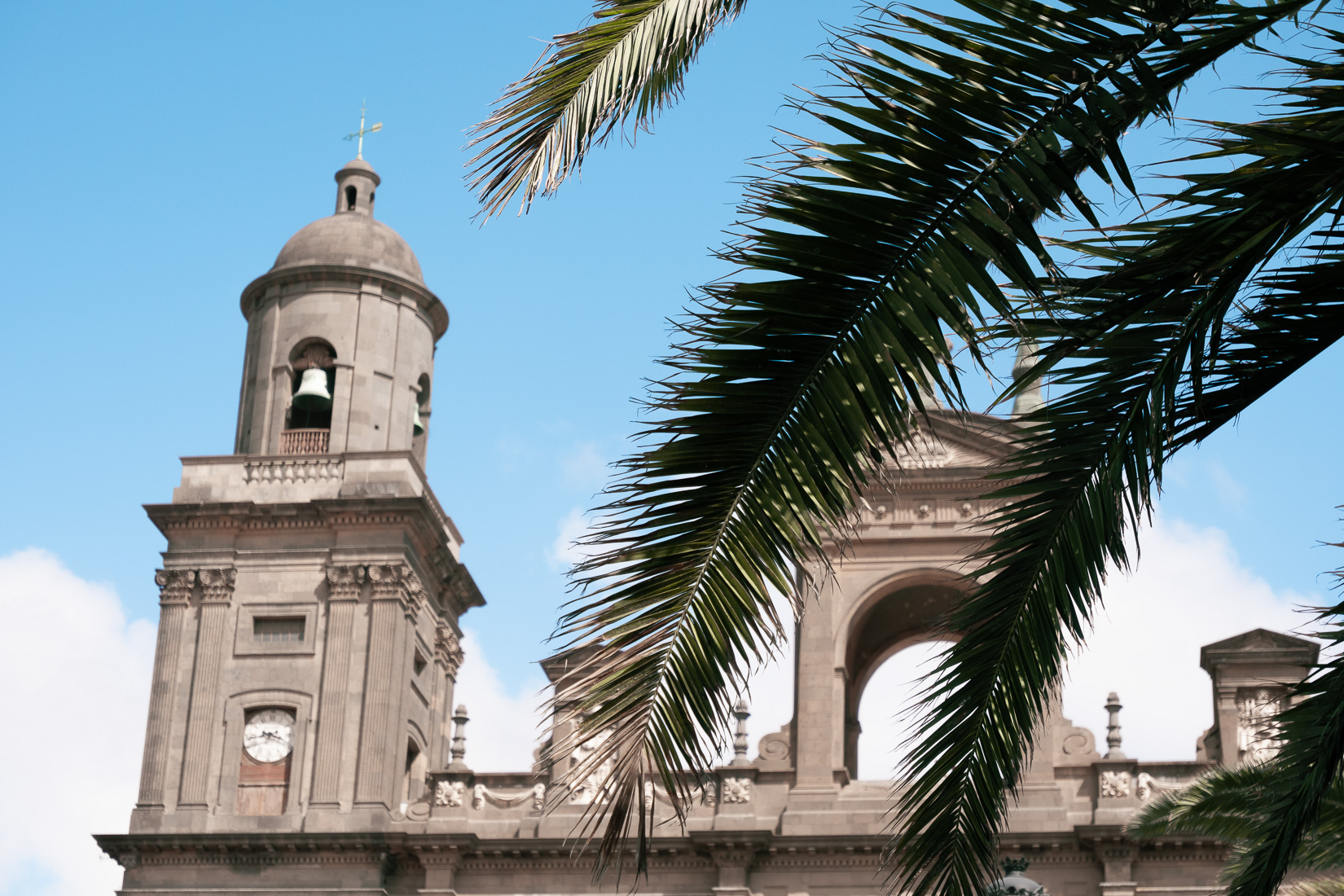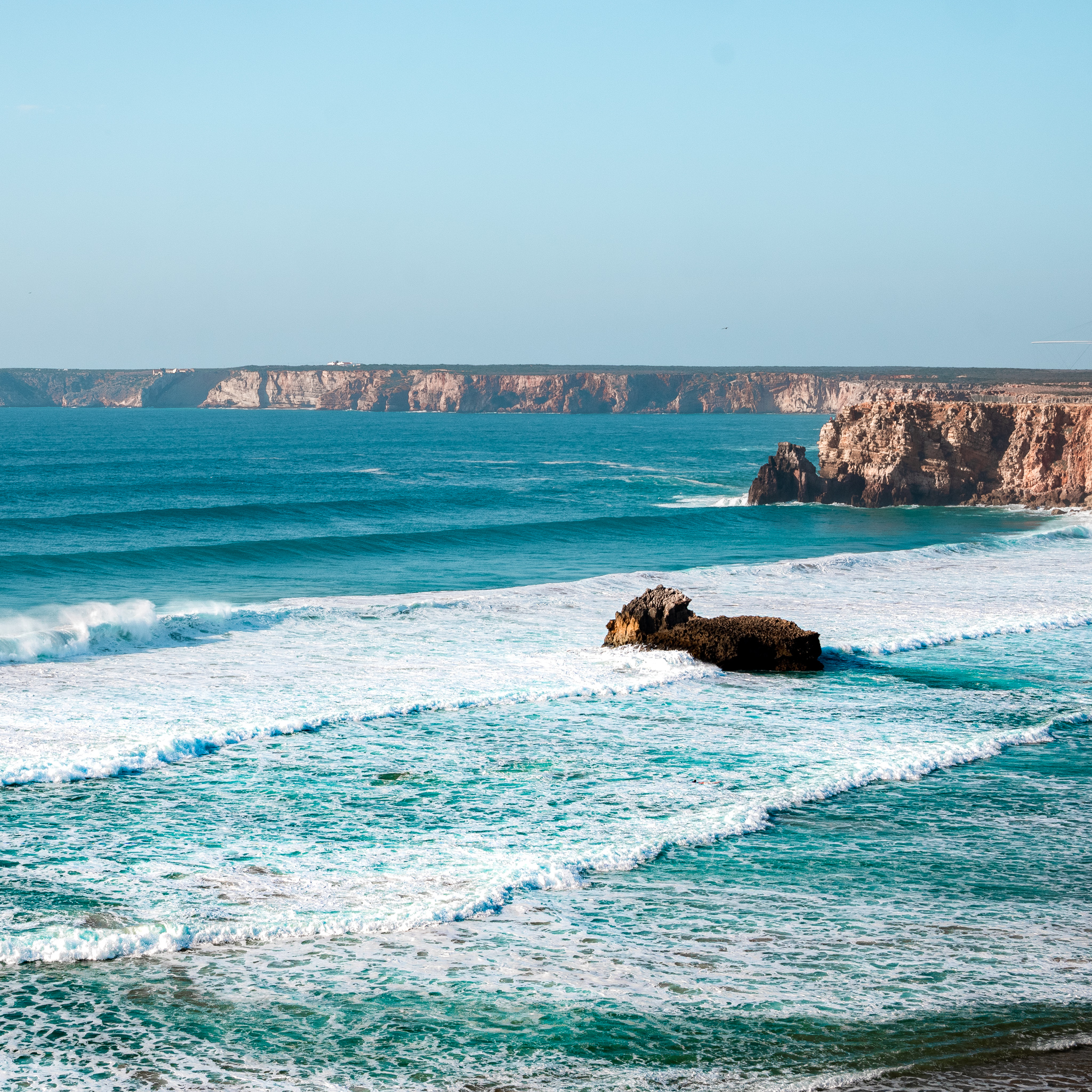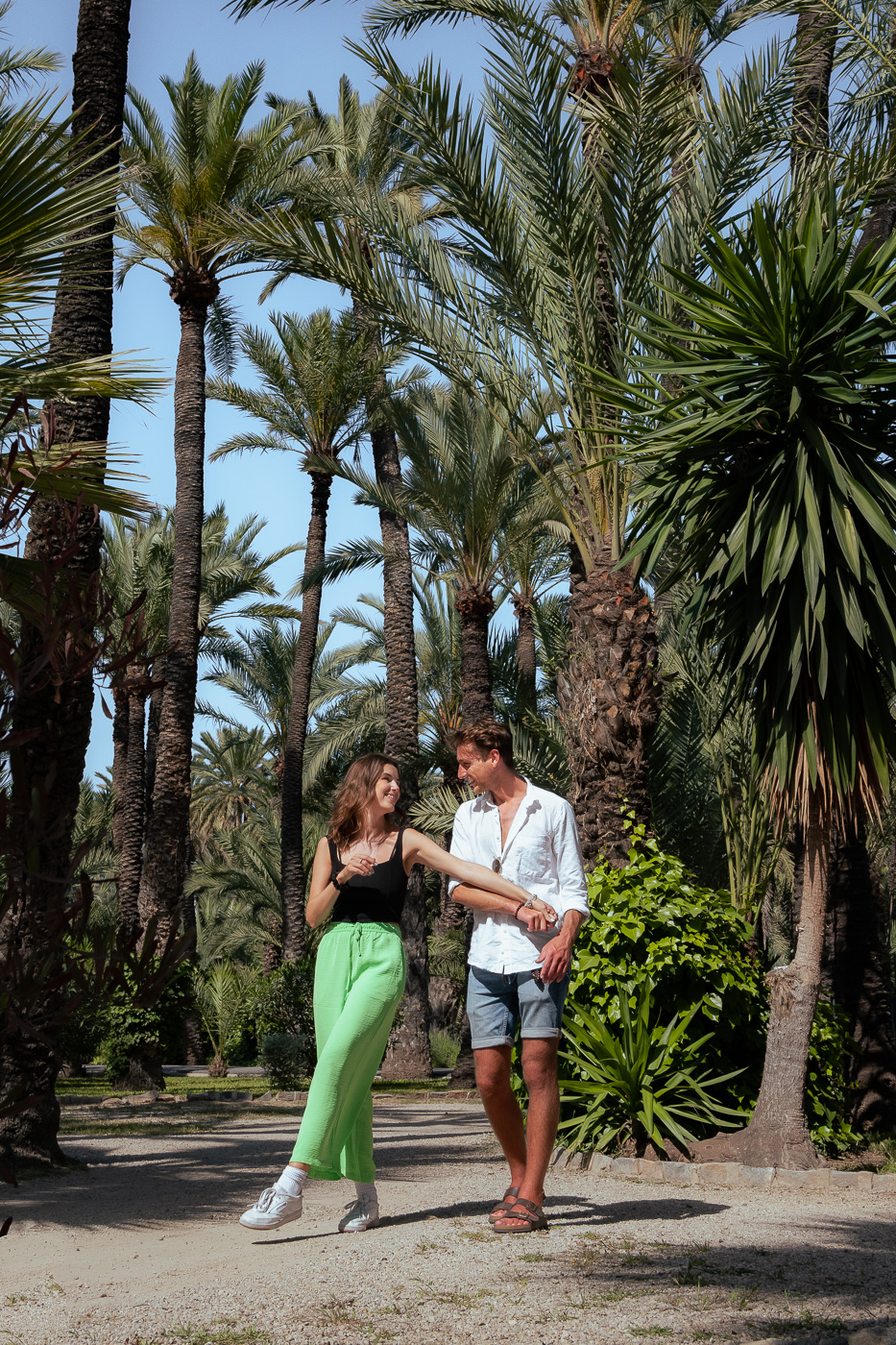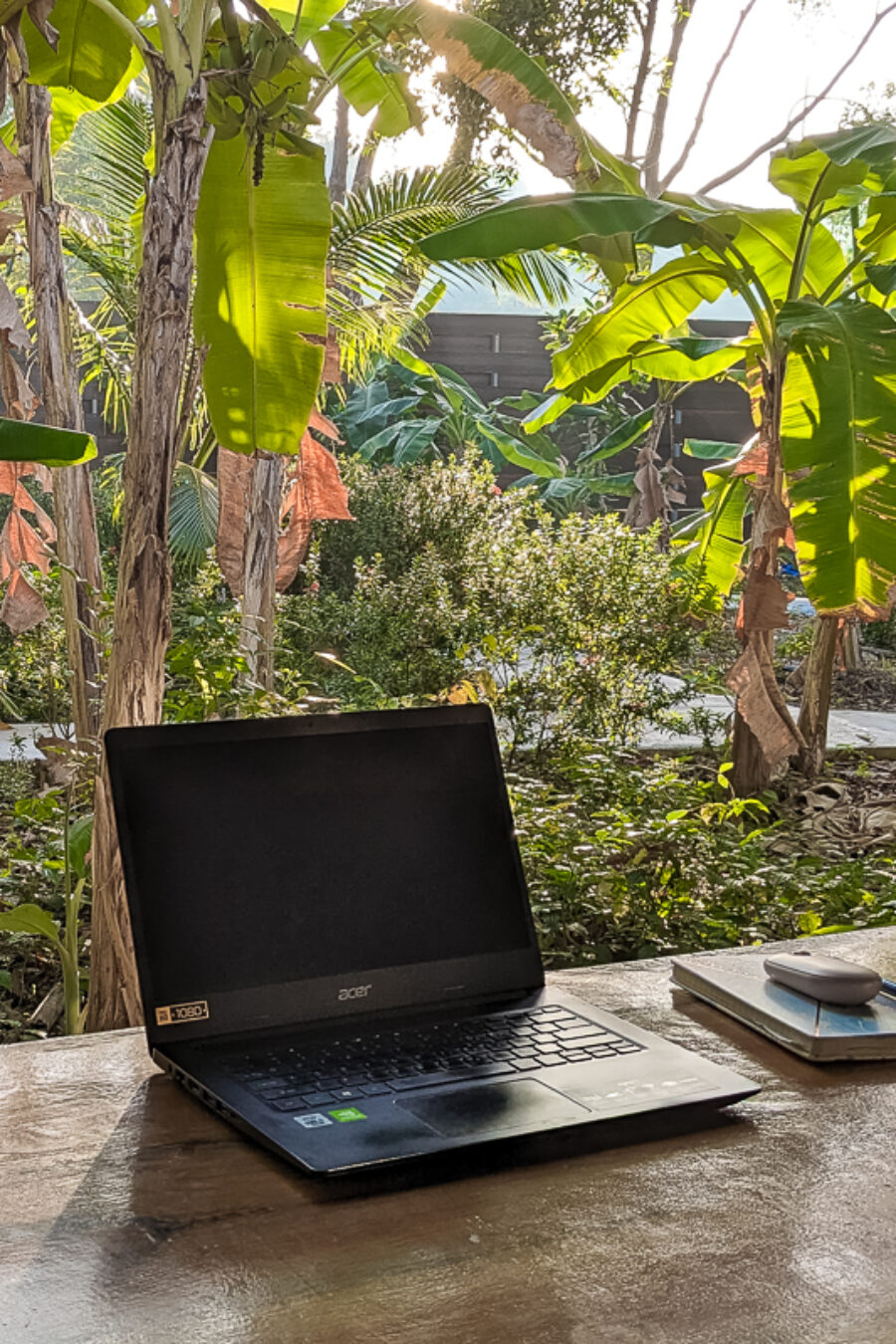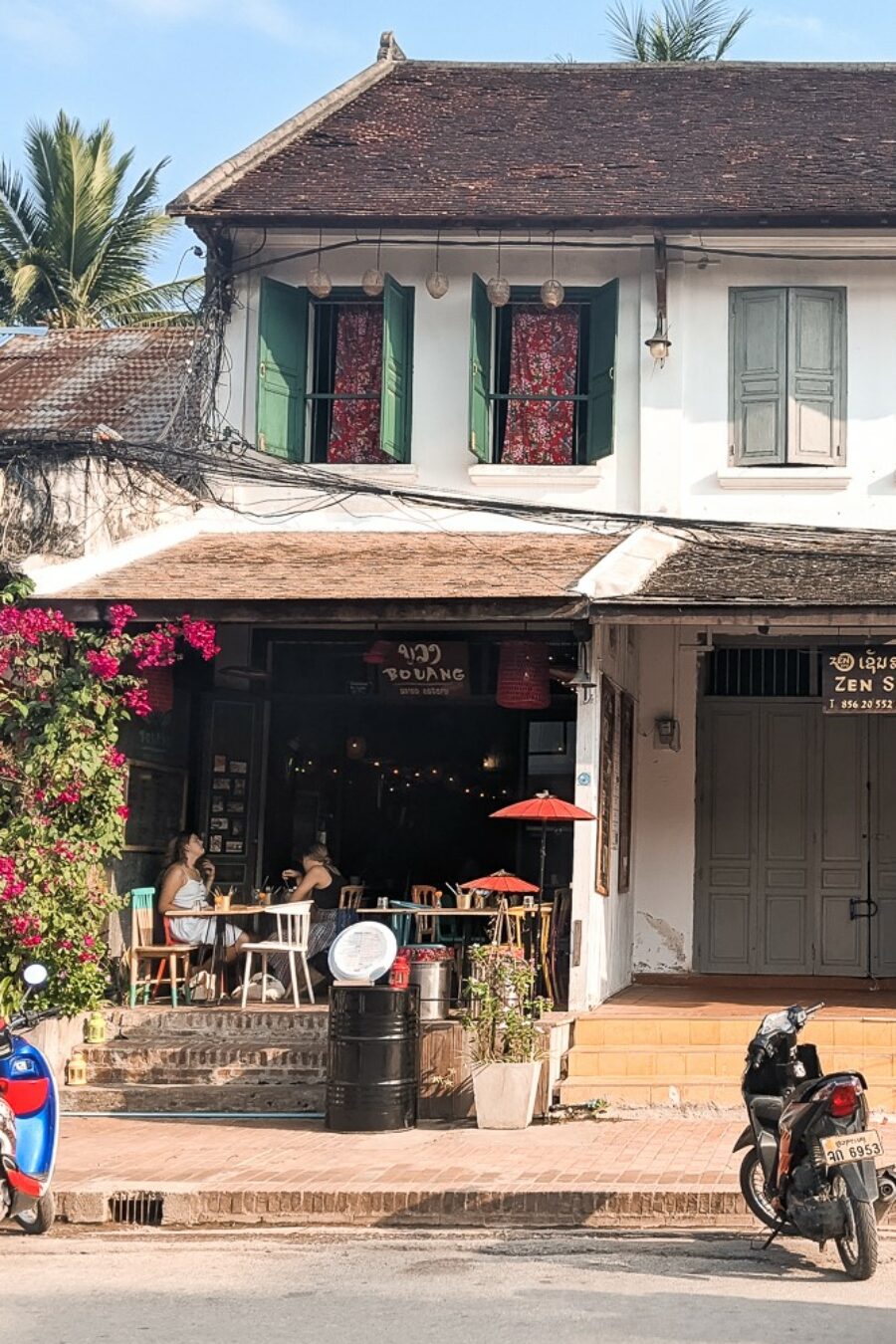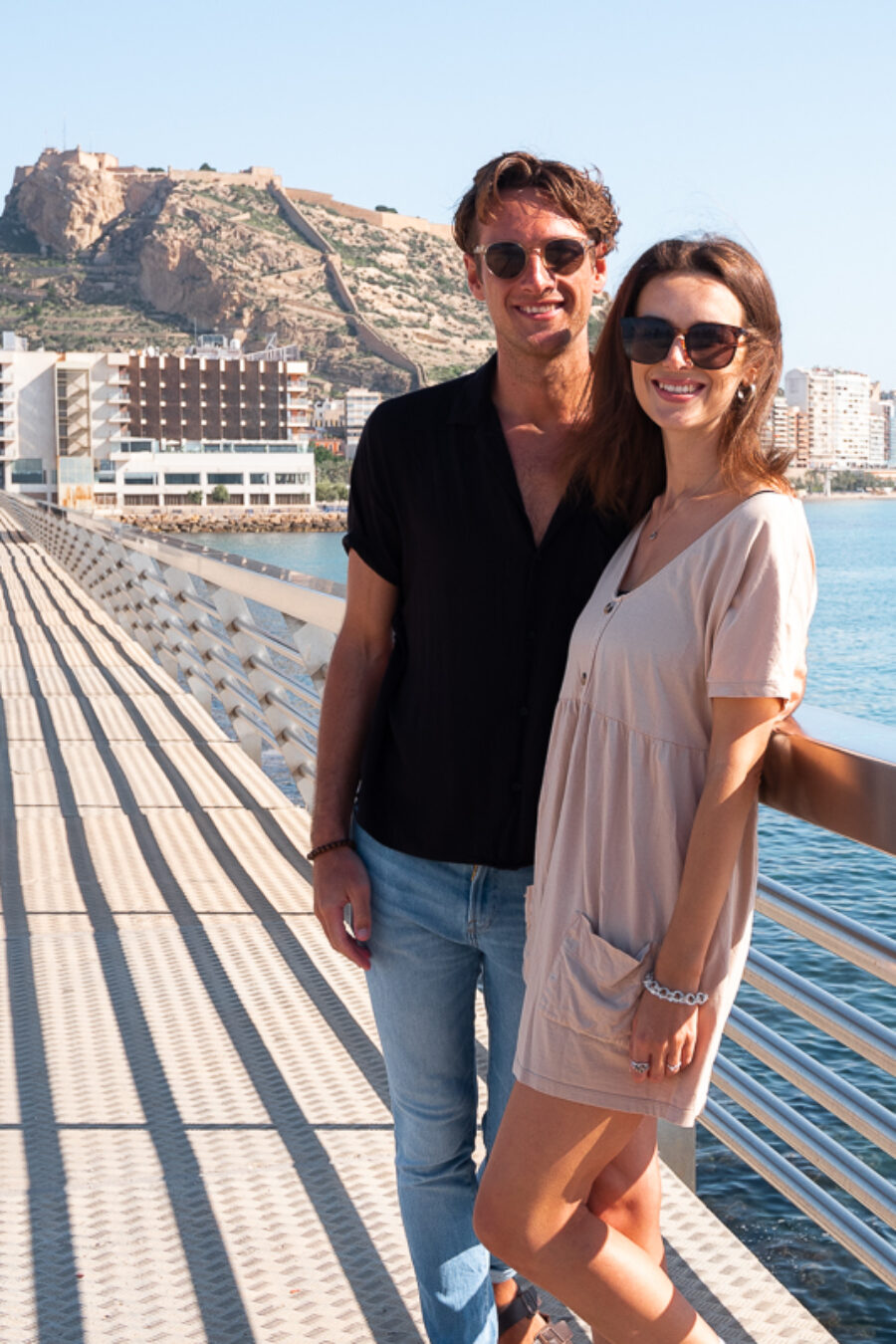This complete Lisbon city guide can help you plan your trip to Portugal’s beautiful capital city.
Whether Lisbon’s your next European city break, the start, end or mid-point on your Portuguese road trip, or your home for a few months as a digital nomad, we’re pretty sure you’ll love it.
Before the pandemic in 2019, Lisbon welcomed 3.64 million tourists and ranked 65th on the list of the most popular cities worldwide (WorldData). We can only imagine these numbers becoming more impressive as the world emerges from its travel hiatus – and with good reason.
Lisbon is vibrant, diverse, inspiring, well-connected, and of course, irrestibly warm and sunny. There’s loads to do and see, and the atmosphere is incredible.
In Lisbon, not only do you get a perfect blend of old and new, but you can literally see different periods of history unfolding before your eyes.
We fell in love with the Alfama, Lisbon’s oldest district with its cobbled streets, topsy-turvy buildings and the melancholy notes of Fado music drifting through leafy courtyards. But we also loved lofty Graça, with its stunning viewpoints, and, down the hill, the wide, shop-lined avenidas that lead down to the sprawling yellow Praça do Comércio and the Rio Tejo (the Tagus River).
The buzzing Cais do Sodre neighbourhood with its renowned restaurants, bars and, of course, the Timeout Market was another big draw. And not forgetting the narrow streets of Bairo Alto, packed with trendy bars and nightclubs. There’s something for everyone to enjoy in Lisbon.
In this complete Lisbon city guide, there’s everything you need to know about visiting Portugal’s capital or making it your temporary base for living and working. If you have a question that’s unanswered, leave us a comment below.

Is Lisbon worth visiting?
In a word, absolutely. In five words, why haven’t you already been? Lisbon is by far one of our favourite cities, and we were lucky enough to spend two months living there in the summer of 2021, having previously visited on one occasion.
With an average of over 300 days of sunshine per year, Lisbon is a destination we always keep in mind when we’re looking for some off-season sun. And if the temperatures get a little too hot to stay in the city, the beach is just a short train ride away.
Lisbon has endless things to see and do, colourful neighbourhoods to explore, and unique eateries to try. There seems to be such life-affirming energy in the city. It’s easy to see why tourists, creatives and entrepreneurs flock to it!
Visiting Lisbon as a solo traveller
Lisbon is incredibly accessible for solo travellers. You can stay in a buzzy hostel and meet other travellers, hang out in lively cafés and bars, or join group tours.
There are plenty of things to do that might suit solo travellers, from roaming museums, galleries and historic churches to enjoying the beautiful viewpoints or joining a tour.
Despite Lisbon’s status as a capital city, it really doesn’t feel that big. Somehow, Lisbon has managed to retain a small-town feel that makes it seem very safe, manageable and not too overwhelming for first-time visitors.
What’s more, Lisbon is very easy to get around by foot or public transport. So you won’t feel too lost if you’re on your own.

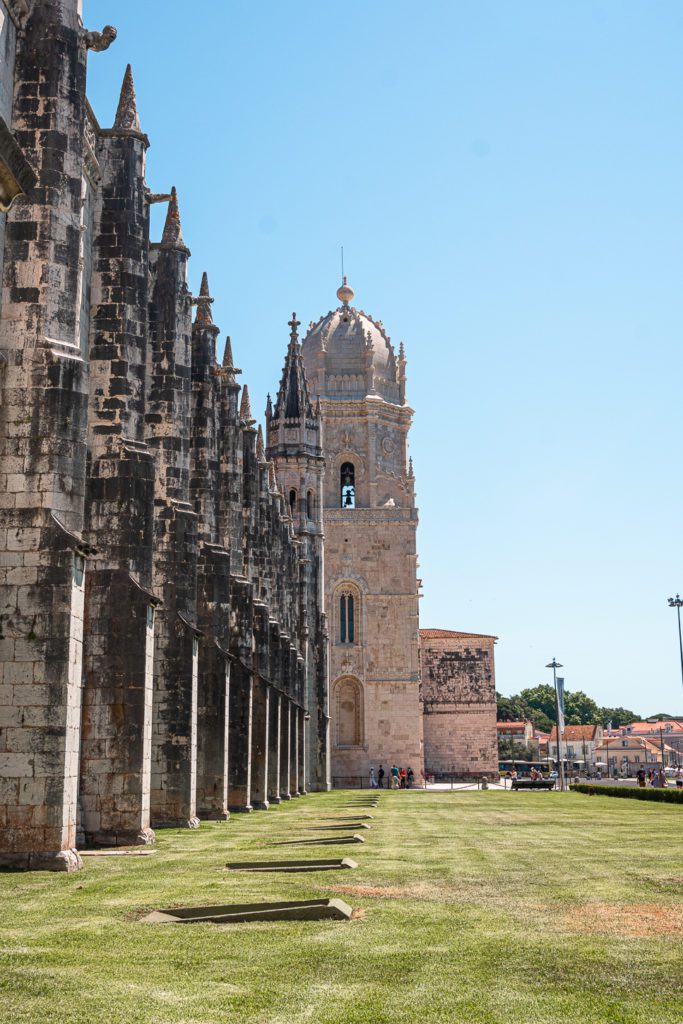

How long to spend in lisbon
If you’re on a tight schedule then we’d recommend a minimum of two days to explore the city and take in some of the highlights. But if you can spare more time, then you won’t regret it.
One of the reasons we say this is because Lisbon is an incredibly hilly city. So getting around can be fairly tiring if you’re not using tuk tuks or trams. If you’re cramming several hills into a few short days then tiring soon becomes exhausting!
Spend a long weekend (or better yet, five to seven days) where you can pick a few of the best things to do and spend the rest of your time enjoying the sunshine with a beer, wine or coffee in hand (select as appropriate).
Plus, your length of stay really depends on whether you want to explore the wider region. The fairytale forests and castles of Sintra might tempt you, or maybe you’ll feel like a few beach days along the coast.
Just be aware that you may not do absolutely everything you set out to – we spent two months living and working there and still didn’t manage to tick everything off our list – but we guess that’s just a good excuse to plan another trip.
When to visit Lisbon
There’s probably no bad time to visit Lisbon. It’s one of Europe’s sunniest cities and the temperatures in winter don’t tend to drop much below a manageable 10°C, while reaching the high 20s and low 30s in the summer.
The best time to visit Lisbon is during the European spring or autumn (April–June and September–November), this way you can always expect pleasant temperatures with plenty of sunshine and minimal rain.

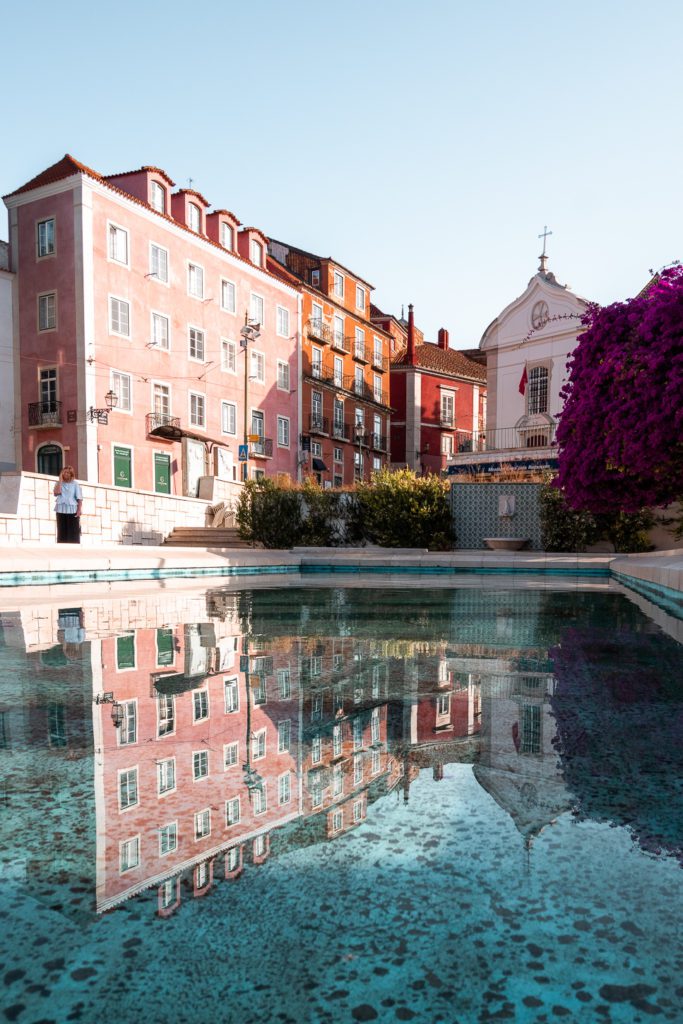
Miradouro de Santa Luzia
Getting to Lisbon
It’s exceptionally easy to reach Lisbon from most countries in Europe and further afield. Simply book a flight to Lisbon’s Humberto Delgado Airport, situated around 10km from the city centre. An Uber from the airport to the city costs around €9, but you can easily catch the metro on the Aeroporto–Saldanha line that takes you into downtown Lisbon in about 20 minutes. A ticket costs less than €2.
If you’re arriving from elsewhere in Portugal, than Lisbon is very accessible by train or bus, with several stations in the city centre.
Lisbon budget
On the whole, Lisbon is slightly more expensive than Portugal’s second city, Porto. But it’s still one of Western Europe’s cheapest capital cities. It really just depends on what you do and like.
Here are some of the average prices you can expect to pay:

Where to stay in Lisbon
Lisbon has numerous neighbourhoods, each with its advantages and disadvantages in terms of location.
Our personal favourite is the Alfama, Lisbon’s old quarter. The winding, cobbled streets spring surprises around every corner and the weight of history hangs heavy over the old buildings. There are cute hole-in-the-wall eateries, bars and shops, and some beautiful views. The only issue with the Alfama is that it was built on a hill (with the castle at the top), so if you choose to base yourself there, you can expect to get super strong legs.
If you want to stay somewhere more central and better connected, choose Chiado or Principe Real. Although bear in mind that accommodation tends to be slightly more expensive in these parts.
If you’re in Lisbon to party, Barrio Alto is where you want to be. This is where you’ll find the beating heart of Lisbon’s nightlife.
Graça is another option for those who want to be slightly out of the tourist route. This hilltop neighbourhood will make you feel like a real Lisbonite, and you get the added bonus of gorgeous views and actually needing to use the classic yellow trams.
We spent two months living and working in Lisbon in the spring/early summer of 2021. We stayed in two different Airbnbs in the Alfama, both of which we would highly recommend for short or long-term stays:
- ‘In Love with Alfama’ apartment


Lisbon’s Alfama neighbourhood
Getting around Lisbon
As we’ve mentioned already, Lisbon is hilly. So while it’s nowhere near as expansive as the likes of Paris or London, getting around without public transport can be exhausting. We’d recommend using a mix of public transport (particularly the tram to get up hills in the Alfama) and your own two feet to make sure you find all the cute spots.
Lisbon also has well-priced taxis and Ubers to help you out.
A convenient rechargeable travel card
To use the bus, tram or metro, we recommend buying a Viva Viagem card from a vending machine in one of the metro stations. The card itself costs €0.50, and you can top it up with a cash amount. Use the simple ‘zapping’ method to get around (basically your card is deducted each time you use public transport – €1.50 for an inner-city journey).
You can use your Viva Viagem card to get from Lisbon to Cascais and Sintra.
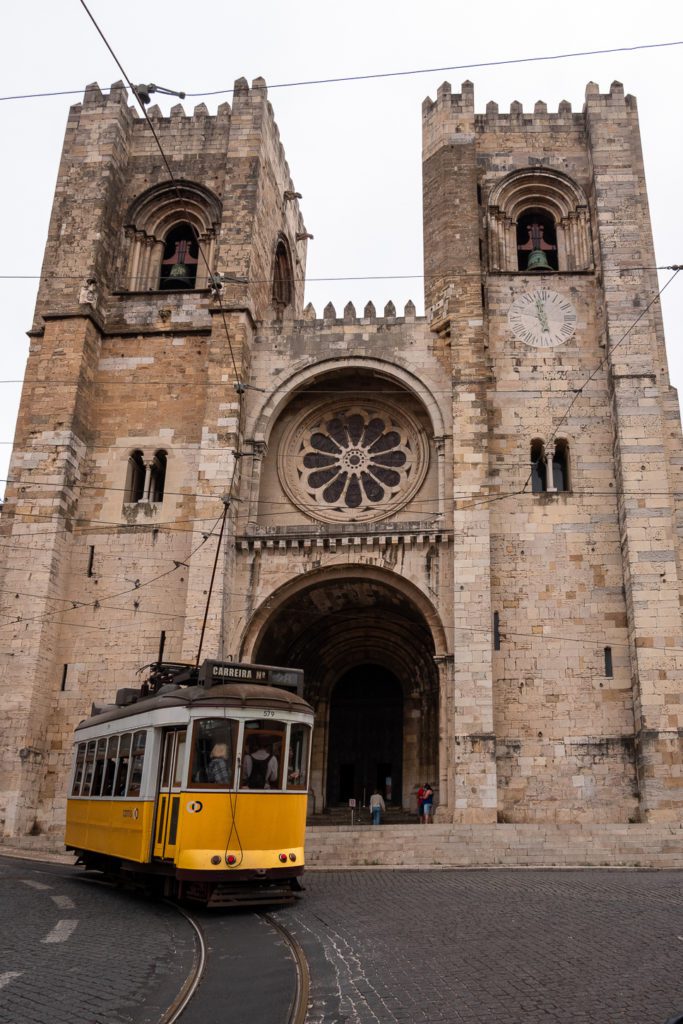

Travel on the tram with the Viva Viagem travel card
Lisbon highlights
Here are some of the best things to do in Lisbon:
Listen to Traditional Fado Music
The traditional music of Lisbon. You’ll undoubtedly hear the captivating and melancholy sound of Fado drifting out of restaurants and bars in the historic Alfama neighbourhood. Many establishments have nightly or weekly Fado performances.
Watching a show at one of the more established spots can be pricey, and we’d definitely recommend booking in advance. We had a wonderful evening at Parreirinha de Alfama, where we had a delicious three-course meal, a bottle of wine and front-row seats at their regular candlelit Fado performance.
You could also check out the Museu do Fado to learn more and possibly catch one of their performances.
Find a miradouro and take in the views
Lisbon is a hilly city! The benefit of this is that it has some incredible viewpoints, or miradouros. There are miradouros scattered all over Lisbon, each with a simply breathtaking view over various parts of the city. Whether you’re gazing out over the Rio Tejo or studying the twists and turns of the Alfama district, each different angle allows you to appreciate Lisbon a little better.
Ride a tram
When most people think of Lisbon, they picture the iconic yellow trams that trundle through the city’s cobbled streets and traverse Lisbon’s unrelenting hills. These yellow trams make a brilliant and cheap daytime activity. While it’s not the comfiest of rides, there is a sense of romanticism about riding a Lisbon tram.
Tram 28 offers the best route for those wishing to see the city and avoid the worst of the hills. Just make sure you board early enough to avoid the crowds, as this route is the most popular with tourists.
Visit the Belém neighbourhood
Just a short tram, train, taxi or cycle ride from central Lisbon is the neighbourhood of Belém. Despite being home to two of Lisbon’s most famous tourist attractions, the area manages to maintain a quiet and relaxed atmosphere and doesn’t feel too crowded.
Highlights include the Belém Tower, the Mosteiro dos Jerónimos and the Belém Palace.
Explore the Castelo De São Jorge
Perched high atop the city is the Castelo de São Jorge, a Moorish castle built in the 10th century. The castle ruins act as a museum where you can delve into history and the Moorish influence on the city.
Entrance is €10 for a standard adult ticket.
The neighbourhood surrounding the castle is also worth the uphill trek. There are numerous cafés, restaurants and shops for you to peruse and you’ll probably spot a peacock or two wandering through the streets.
It’s a fair stroll up the hill to the castle and it can be fairly tough on the legs. If you’re not up to the walk, there are plenty of tuk-tuks and taxis happy to make the journey as well as the 737 bus.
Admire the Praça Do Comércio
The historic Praça do Comércio is a spot you simply must visit when you’re in Lisbon.
The sprawling, yellow square is situated right on the riverfront where Lisbon’s royal palace once stood. You’ll find numerous cafés and restaurants dotted around the square and it’s a nice spot to sit and admire the stunning Pombaline architecture. Wander down to the riverfront and watch the yachts pass by on the River Tejo.
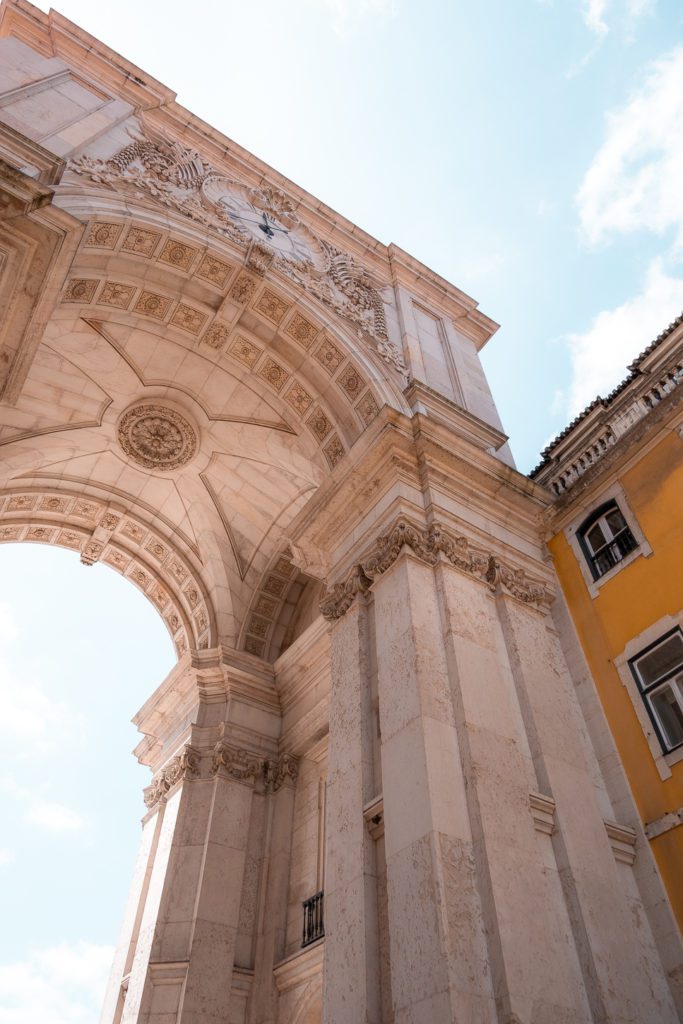
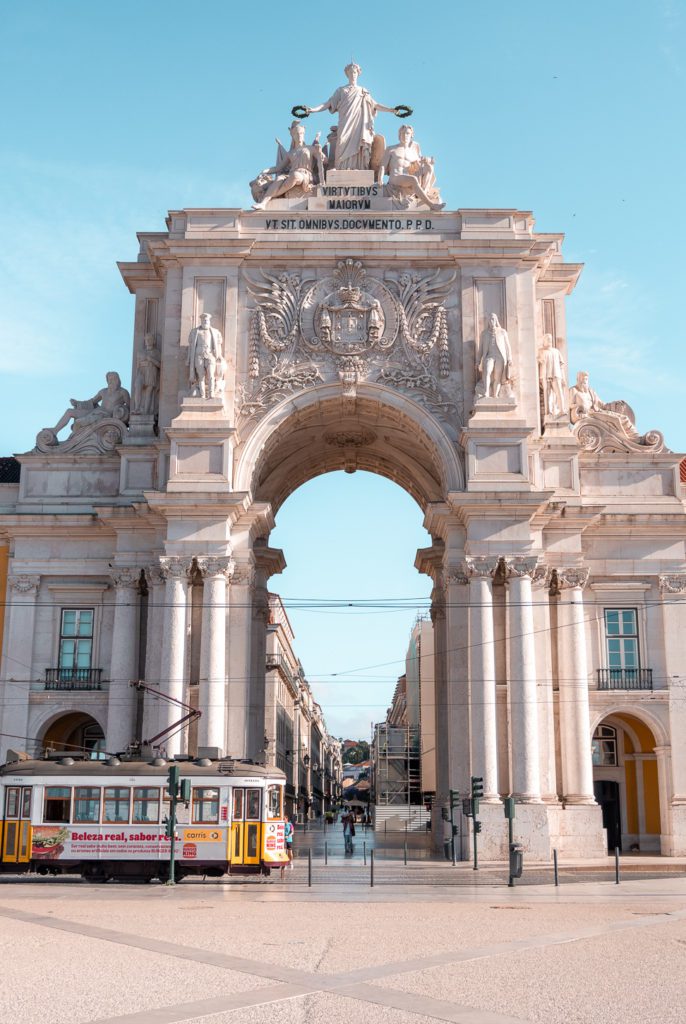
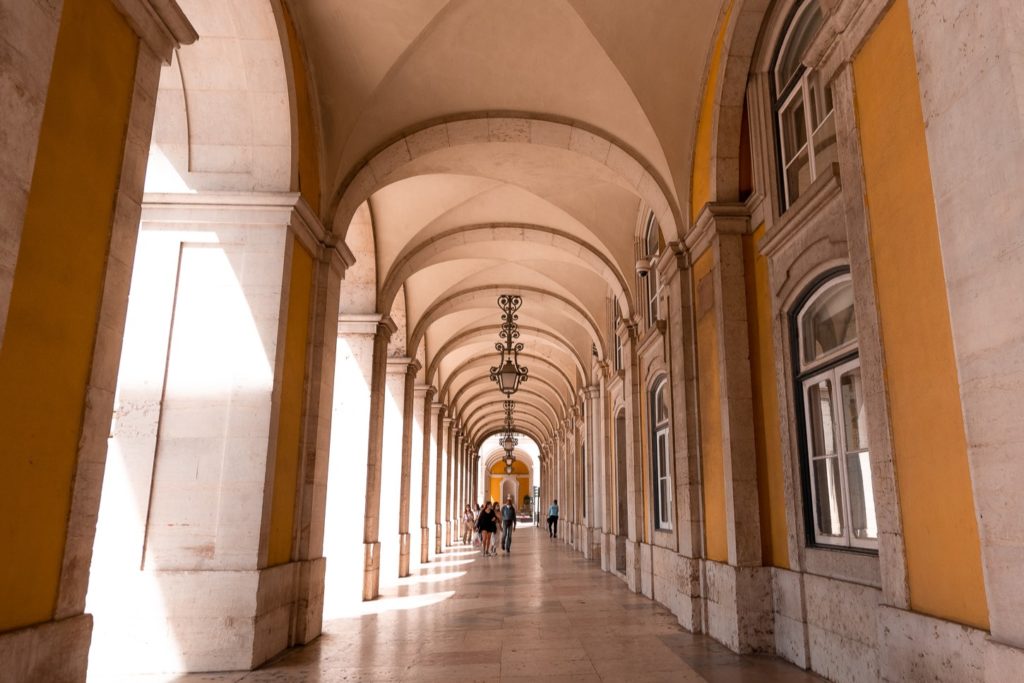
This Lisbon city guide only features a handful of things to do in Lisbon. For more ideas, head to our dedicated blog: 17 Top Things to Do in Lisbon.
Lisbon’s foodie temptations
- Pastéis de nata – Caramelised custard encased in mouth-watering flaky pastry. One simply won’t be enough! Graça is our favourite spot in Lisbon for pastries of any description, so head there if you can.
- Bifana – While the francesinha may be Porto’s signature sandwich, the bifana belongs to the whole of Portugal. Bifanas are simple, comprising of a crusty roll with sauteed and seasoned pork strips. For a cheap and tasty lunch, you can’t really go wrong with a bifana.
- Sardines – Whether you enjoy them canned with crusty bread or fresh and grilled, sardines are a part of Lisbon’s identity.
- Ginjinha – Also known as ginja, ginjinha is a delightful cherry liqueur. It’s often sold in a chocolate shot glass, so you can pop the whole thing in your mouth. You’ll find ginja stalls in every corner of the city, and some locals even sell homemade ginja from their doorsteps in the Alfama.
Day trips from Lisbon
Lisbon really is a city that has everything. But, should you want to venture out of the city limits and explore a bit more of the surrounding areas, here are our top recommendations for day trips from Lisbon:
Cascais
Lisbon is a great place to be in summer, but when it gets hot, it gets really hot. Luckily, there are a few beaches easily accessible by train. The most popular beach with the biggest and most put-together town is Cascais.
Getting there is simple. Catch a train from Cais do Sodre station. A return ticket costs €5 and the journey takes 30 minutes. The beaches aren’t quite as beautiful as those you see in the Algarve, but they are a great place to unwind in the sun. The town is also really pretty, if a little touristy, with a great selection of seafood restaurants and bars. (Cascais is a great spot to have sardines!)
Note that another brilliant beach spot is Carcavelos. It’s on the same train line as Cascais, but the journey is shorter and the beach is larger.
Setúbal
Setúbal, another beach town near Lisbon, is located across the river on the southern side of the peninsula. The beaches here are a little more ‘wild’ than Lisbon’s beaches. Picture palm trees, steep cliffs and lots of vegetation.
It’s doable as a day trip, but as always, we recommend staying for a night or two. You could hire a car, but be aware that the beaches are strictly car-free. You might be better off catching the train (€5 for a return ticket) and utilising the public busses that will ferry you to the beaches. Catch the train from Sete Rios station.
Stay at Quinta de Sao Filipe in Setúbal, a rustic hotel with gorgeous views across the peninsular.
Sintra
There aren’t many other ways to put it – Sintra is a magical place. Arriving in Sintra is like stepping into a fairytale world, full of palaces, castles and quintas that belonged to kings and queens of old.
Upon arrival, hop on a local bus to visit the various palaces and castles that adorn Sintra’s hills, or simply wander the streets and relax in the old town. Sintra has a bunch of lovely cafés and restaurants where you can rest your feet. You can also try a travesseiro, Sintra’s own pillow-shaped puff pastry treats filled with almond cream.
Sintra is one of the most popular day trips to do from Lisbon. So if you have more time and want to beat the crowds, then a good option might be to stay overnight, rather than trying to do everything in one day. Otherwise, get there early!
The easiest way to visit Sintra from Lisbon is by train. A return ticket will cost €5 plus €0.50 if you don’t already have a Viagem card. Trains run every half hour and take either 40 minutes or 54 minutes depending on the service. The train terminates at Sintra.
Visiting Sintra from Lisbon is one of our top recommendations for things to do when visiting the city, so check out our dedicated article to help plan your trip.



Being a digital nomad in Lisbon
Lisbon is such an inspiring city – it’s full of energy and creative people, and it’s the perfect place for aspiring or established digital nomads.
Here are some of the advantages to being a digital nomad in Lisbon:
- Affordable high-quality accommodation and a great range of Airbnbs
- Strong wi-fi connections
- Lots of great cafés and co-working spaces
- It’s easy to get around the city – no need for a car
- Supermarkets, shops and amenities
- Cheaper cost of living than parts of the Algarve and elsewhere in Europe
- Short bus or train ride to the beach
- Lots of things to see and do to keep you occupied during your stay

WMJG Lisbon City Guide
Lisbon is such a special city and we hope you enjoy your trip, whether it be short or long. If you have any further questions or a suggestion you’d like to share, feel free to pop it below!
Like our content? Help support our work by buying us a coffee!
Other Portugal Articles
Discover Somewhere New
Hover over or click one of the pins to choose a country.

